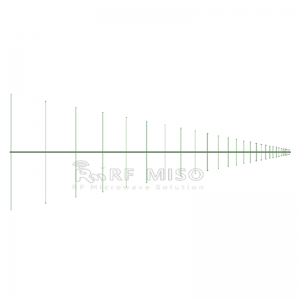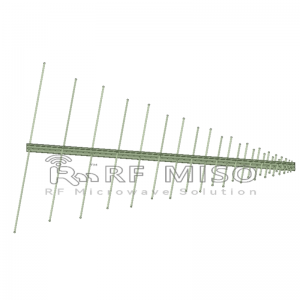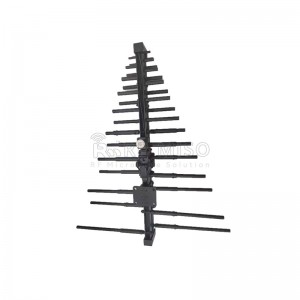The log-periodic antenna is a wide-band antenna whose working principle is based on resonance and log-periodic structure. This article will also introduce you to log-periodic antennas from three aspects: the history, working principle and advantages of log-periodic antennas.
The history of log-periodic antennas
Log-periodic antenna is a wide-band antenna whose design is based on log-periodic structure. The history of log-periodic antennas dates back to the 1950s.
The log-periodic antenna was first invented in 1957 by American engineers Dwight Isbell and Raymond DuHamel. While conducting research at Bell Labs, they designed a broadband antenna capable of covering multiple frequency bands. This antenna structure uses a log-periodic geometry, which gives it similar radiation characteristics over the entire frequency range.
In the following decades, log-periodic antennas have been widely used and studied. They are used in areas such as wireless communications, television and radio reception, radar systems, radio measurements, and scientific research. The wide-band characteristics of log-periodic antennas enable them to cover multiple frequency bands, reducing the need for frequency switching and antenna replacement, and improving system flexibility and efficiency.
The working principle of log-periodic antenna is based on its special structure. It consists of a series of alternating metal plates, each increasing in length and spacing according to a logarithmic period. This structure causes the antenna to produce phase differences at different frequencies, thereby achieving wide-band radiation.
As technology advances, the design and manufacturing methods of log-periodic antennas have improved. Modern log-periodic antennas use advanced materials and manufacturing processes to improve antenna performance and reliability.
Its working principle can be briefly described as follows
1. Resonance principle: The design of log-periodic antenna is based on the resonance principle. At a specific frequency, the structure of the antenna will form a resonant loop, allowing the antenna to effectively receive and radiate electromagnetic waves. By precisely designing the length and spacing of the metal sheets, log-periodic antennas can operate in multiple resonant frequency ranges.
2. Phase difference: The log-periodic ratio of the metal piece length and spacing of the log-periodic antenna causes each metal piece to produce a phase difference at different frequencies. This phase difference leads to the resonant behavior of the antenna at different frequencies, thereby enabling wide-band operation. Shorter pieces of metal act at higher frequencies, while longer pieces of metal act at lower frequencies.
3. Beam scanning: The structure of the log-periodic antenna makes it have different radiation characteristics at different frequencies. As the frequency changes, the radiation direction and beam width of the antenna also change. This means that log-periodic antennas can scan and adjust beams over a wide frequency band.
Advantages of log-periodic antennas
1. Broadband characteristics: Log-periodic antenna is a wide-band antenna that can cover multiple frequency bands. Its log-periodic structure enables the antenna to have similar radiation characteristics across the entire frequency range, eliminating the need for frequency switching or antenna replacement, improving system flexibility and efficiency.
2. High gain and radiation efficiency: Log-periodic antennas usually have high gain and radiation efficiency. Its structure allows resonance in multiple frequency ranges, providing strong radiation and reception capabilities.
3. Directivity control: Log-periodic antennas are usually directional, that is, they have stronger radiation or reception capabilities in certain directions. This makes log-periodic antennas suitable for applications requiring specific radiation directivity, such as communications, radar, etc.
4. Simplify system design: Since log-periodic antennas can cover a wide frequency range, system design can be simplified and the number of antennas can be reduced. This helps reduce system cost, reduce complexity and improve reliability.
5. Anti-interference performance: Log-periodic antenna has good anti-interference performance in a wide frequency band. Its structure enables the antenna to better filter out unwanted frequency signals and improve the system's resistance to interference.
In short, by accurately designing the length and spacing of the metal sheets, the log-periodic antenna can work in multiple resonant frequency ranges, with wide-band characteristics, high gain and radiation efficiency, directivity control, simplified system design and anti-interference. performance advantages. This makes logarithmic periodic antennas widely used in wireless communications, radar, scientific research and other fields.
log periodic antenna series product introduction:
Post time: Dec-28-2023











